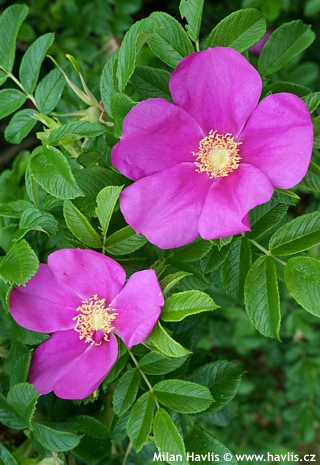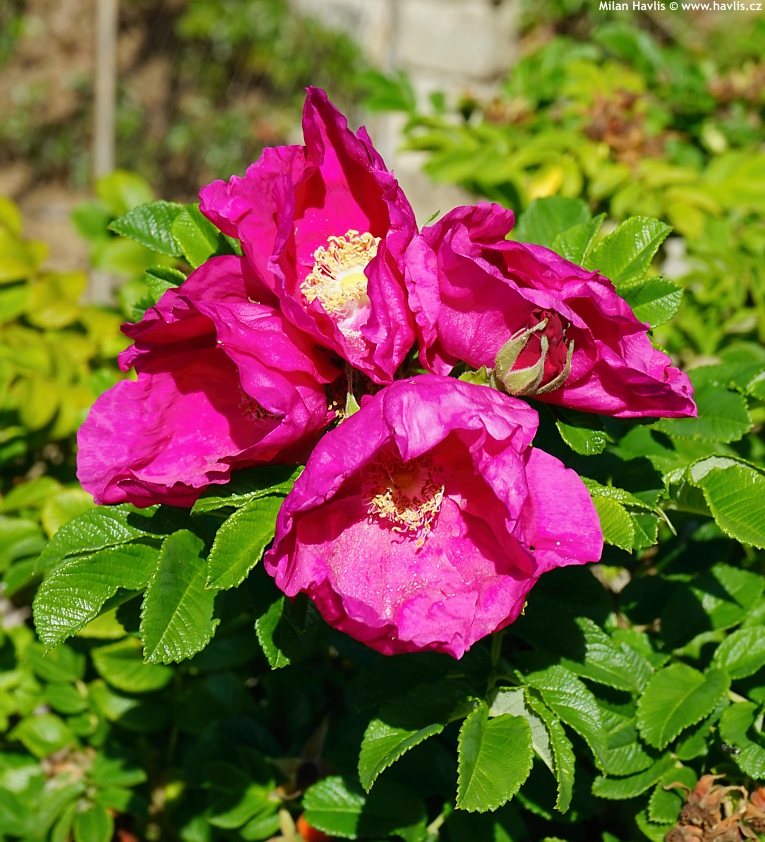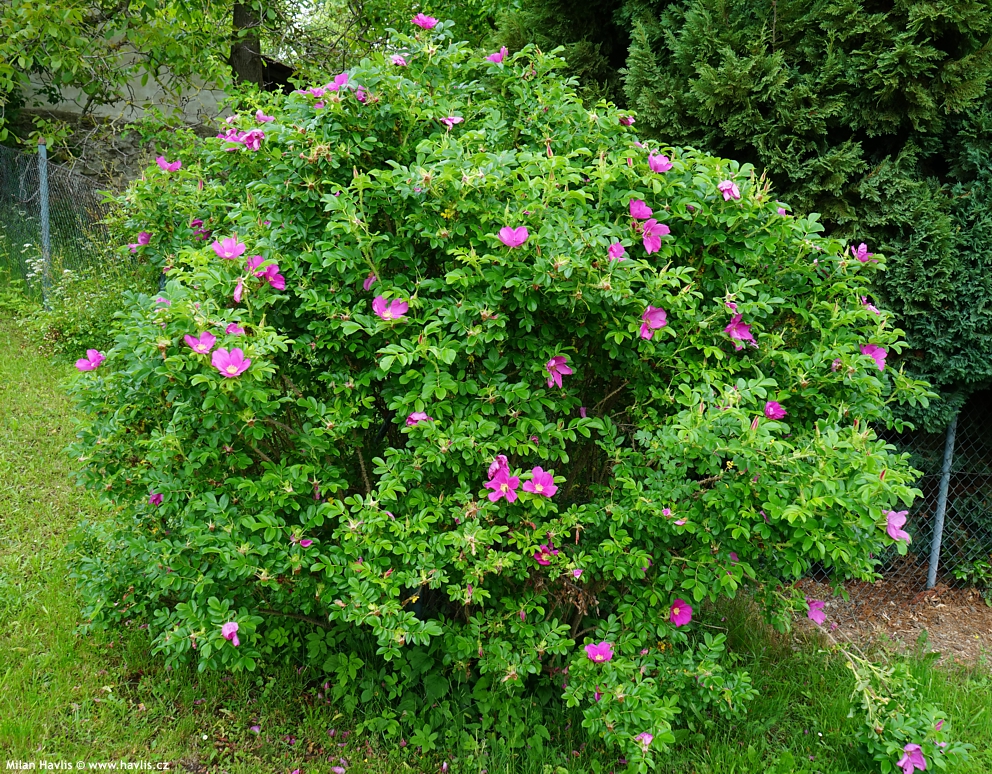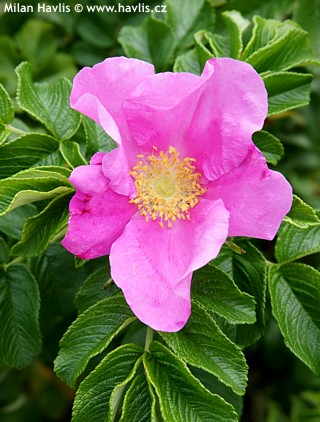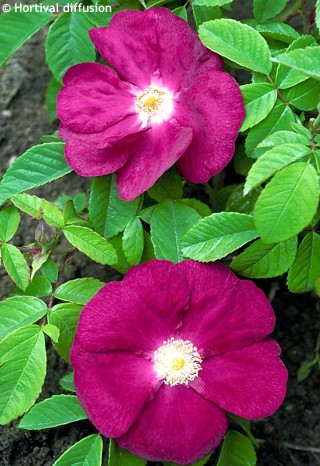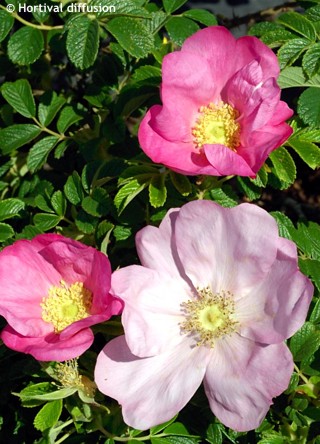Rosa rugosa 'RUBRA' Ramanas rose, hegdehog rose, Japanese rose
size/type
medium-sized shrub,medium-sized shrub
usual height
1-2m
usual width
1-2m
leaves
deciduous broadleaf
colour of leaves
flowers
showy
colour of flowers
blooming time
June-September
location
full sun
USDA zone (lowest)
2 (down to -45°C)
winter protection
for zone 5+6

for zone 7

categorized
Rosa
Ramanas rose is a top 5 rose among landscape architects. It has so many positive features that make it impossible not to grow at least a few in every road. Among all its advantages here are just some of them: absolutely care-free, extremely hardy, fully disease-resistant, and most importantly long-flowering. It originates in eastern parts of Russia, E. Asia and Japan.Description of the plant:
Rubra variety of Ramanas rose produces abundance of medium-sized (5-8 cm across), single, fragrant flowers that are deep carmine-purple to violet-red. Borne singly or in clusters of 2-3 they come out from June until September, and are followed by deep orange red to scarlet red hips. The fruit is classified as edible and sweet in flavour, however, the layer of hairs around the seeds just beneath the flesh of the fruit has to be removed before eating since it could cause irritation to the mouth and digestive tract.Deciduous leaves are wrinkled, rich green and glossy, composed of 5-9 narrowly oblong leaflets. There is usually a lot of them and they completely cover the plant making it a great, non-transparent hedging choice. The stems are prickly, densely covered with short spines like hairy locust. It grows vigorously, moderately to fast, and can be pruned in early spring.
Ramanas rose will grow almost anywhere – it tolerates wide range of soils, adverse conditions and city pollution. For best results, however, grow it in medium-fertile soil in full sun, and keep the soil moist after transplanting before the plant grows large enough to cast enough shade to its roots. Hardy to about -45°C.
Last update 12-02-2016
QUICK PRICE OVERVIEW
CURRENTLY SOLD OUT












